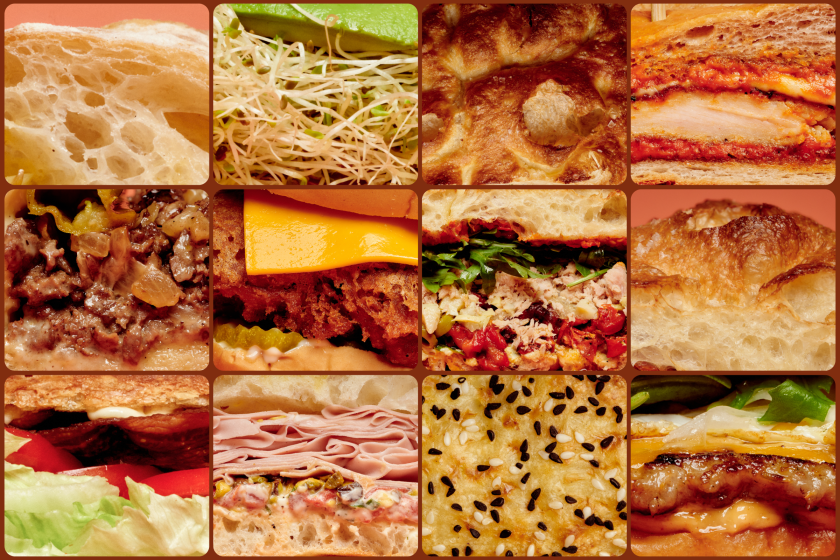Chardonnay, Cabernet Sauvignon, Merlot : Robert Keenan Winery: Napa Valley Vintner Excels With Three Varietals
When Napa Valley vintner Robert Keenan graduated from Stanford University after World War II, his friends jokingly said he majored in “bridge and beer.” As it turned out, they were right on the bridge and wrong on the beer because it was wine that was really on his mind--so much so, that as soon as he acquired a substantial nest egg from the sale of his insurance business, he not only purchased a major wine cellar but established a promising Napa Valley winery to boot.
No longer just promising, the Robert Keenan Winery is now flourishing by concentrating on three major varietals, Chardonnay, Cabernet Sauvignon and Merlot, which has enabled it to do well in competition. Utilizing only 46 acres of vineyards reclaimed from forest-type hillsides above Spring Mountain overlooking the Napa Valley, Keenan has emerged as a first-rate vintner with the assistance of San Francisco-born enologist Rob Hunter.
Winery’s Style
Napa Valley Chardonnay, 1984, best typifies the winery’s style penchant for ripe, rich, round, yet restrained, flavors a la white Burgundy. A blend of apple-lemon taste accents and flavor austerity complemented by a Burgundy-like crisp finish suggests an understated mode that does remarkably well at the table. The wine is described by Hunter as a typical of California Chardonnay, and I am inclined to agree. With only 2,500 cases the wine is priced right at $12, although some stores may discount the wine to $9 or $10.
Keenan’s Napa Chardonnay, not estate bottled, is also rich, round and ripe in addition to having a lovely aromatic, spicy, apple-like nose and better, more pronounced flavors, perhaps due to the added component of grapes from Carneros, fast becoming a haven for Chardonnay grapes. Because of barrel fermentation, the wine flavors fairly glide across the palate with buttery tones that are a delight. Alcohol here, although the same percentage as the ‘84, appears more intrusive and because of a slightly toasty mode the wine appears more complex. The wine was released April 1 at $11 and may well be discounted to $9.
Cabernet Sauvignon, Estate Bottled, 1983, is full of superb flavor intensity and is indeed one of the best the winery has produced. Complemented by 8% Merlot grapes, the wine is 92% from estate vines, 4% from Carneros and 4% from various vineyards in the Napa Valley. Drinking the wine today is pleasurable, but judging from earlier Keenan Cabernets, three to five years of additional aging will help turn cherry-chocolate flavors to nuance and complexity. The stylistic goal here is refined smoothness and the balancing of fruit and oak, which since 1978 has made Keenan one of Napa’s better Cabernets. The 1984 Cabernet, Estate Bottled, is beginning to show considerable class, again with cherry and chocolate flavors but in a leaner texture and is indeed a very approachable Cabernet today. Priced at $15, it is the kind of wine more Napa Valley vintners are trying to make because of its earlier-to-drink readiness.
A few bottles of the 1978 may still be available; it is magnificent. Here is a wine showing the mature bouquet filled with the complexity of violets, an in-depth flavor, complete with silky lusciousness, and even though 14% alcohol may seem high, it doesn’t seem to impact negatively the wine’s lovely concentration and high inky extract. Indeed, it drinks like a liqueur and although it is approaching 10 years of age, it appears too young to drink. Obviously, a beauty capable of further aging.
Cherry and spice are featured both in the nose and taste of Napa Valley, Merlot, 1984. Showing a bit of wood and not overpowering flavor, the wine suggests a semi-intense style and silky leanness. A wine worthy of aging, it is a bigger-styled Merlot than probably intended but because of generous drinkability it is a candidate for earlier consumption rather than later. Eighteen months in 60-gallon French Nevers Oak rounds out the Merlot fruit so that drinkability is at hand. It is priced at around $8.
Stylizing along French wine guidelines is not surprising for Keenan, who initially discovered wine by drinking claret, notably the big names like Lafite and Latour. This was the beginning of a love affair with wine, further romanced by reading on the subject of soils and viticulture. For two years he searched for a wine property, finally stumbling on the old Conradi Winery property originally founded in 1890 on 176 acres. All that remained were four stone walls of the winery, a dirt floor, tin roof and decaying redwood tanks on the hill. A new winery facility was designed using the remains of the old, and the Keenan Stone Winery was completed in time for the crush of 1977.
Hunter’s interest did not develop from ritzy bottles, as did Keenan’s. When he was 13 his father purchased a vineyard in Sonoma Valley, where he spent summers doing vineyard work and assisting crews during harvest. The strong attachment to Sonoma vineyards drew him to UC Davis, concentrating on viticulture and agricultural economics.
Wine making did not become a major interest until after summer internships at Woodbury Winery and Domaine Chandon. He has worked also at Schramsberg and later as assistant wine maker at Groth Vineyards in Napa. Hunter is in his first chief wine-maker role where he will have the opportunity to blend his California palate with Keenan’s French-bred taste.
For consumers, it is, as always, an exciting prospect when a vintner with a keen palate projects his taste into the wine-making skill of an academically trained enologist. The interaction between the two should make future Keenan wines a heady blend.
More to Read
Eat your way across L.A.
Get our weekly Tasting Notes newsletter for reviews, news and more.
You may occasionally receive promotional content from the Los Angeles Times.








